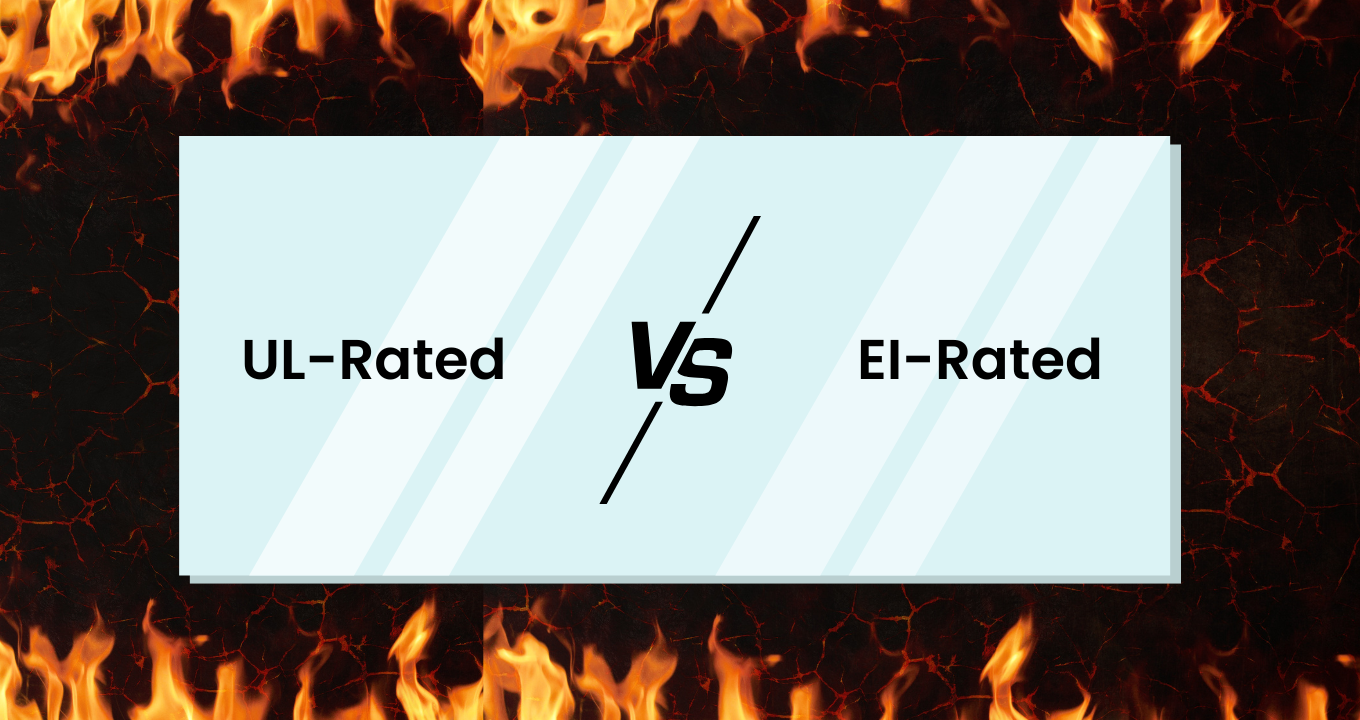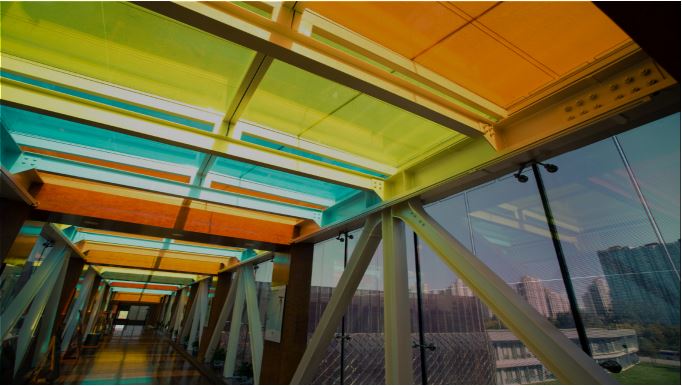Fire safety is one of the most critical aspects of modern building design. As architects and consultants increasingly incorporate glass into facades, partitions, and doors, choosing the right fire-rated glass becomes essential. Among the most widely used classifications are UL-rated glass and EI-rated glass both designed to protect lives and property but with distinct performance differences.
What is UL-Rated Glass?
UL-rated glass refers to glass tested and certified by Underwriters Laboratories (UL), a globally recognized safety certification body. UL fire ratings primarily focus on fire endurance that is, how long the glass can withstand exposure to fire before failing.
- UL ratings are usually expressed in minutes (20, 60, 90, 120).
- These ratings certify that the glass can resist fire for the specified duration.
- UL-rated glass prevents flames and hot gases from passing through, but it may not always limit heat transfer.
This makes UL-rated glass ideal for applications like fire doors, vision panels, and partitions where compartmentalization is required.
What is EI-Rated Glass?
EI-rated glass, on the other hand, is certified under European standards (EN 13501-2). The EI classification measures both Integrity (E) and Insulation (I).
- Integrity (E): Prevents flames and smoke from spreading.
- Insulation (I): Limits the rise of surface temperature on the non-fire side.
This means EI-rated glass not only blocks flames but also reduces radiant heat transfer, providing greater protection for occupants and adjacent spaces. EI ratings are commonly required in escape routes, stairwells, and critical structural areas where both flame and heat protection are crucial.
Key Differences Between UL and EI Fire-Rated Glass
- Certification Standard
- UL-rated glass: Tested under American standards.
- EI-rated glass: Tested under European standards.
- Protection Level
- UL: Focuses on flame and smoke containment.
- EI: Provides flame, smoke, and radiant heat insulation.
- Applications
- UL: Suitable for fire doors, internal partitions, and windows.
- EI: Ideal for escape corridors, facades, and high-risk zones requiring maximum protection.
- Temperature Control
- UL: May allow heat transfer to the safe side.
- EI: Prevents temperature rise, ensuring safety during evacuation.
Choosing the Right Fire-Rated Glass
The choice between UL-rated and EI-rated glass depends on local building codes, project requirements, and intended applications. For example, if the goal is to prevent flame spread while maintaining visibility, UL-rated glass may suffice. However, for high-risk areas where radiant heat must also be controlled, EI-rated glass is the preferred choice.
FG Glass Fire Safety Solutions
At FG Glass, we provide a complete range of UL-rated and EI-rated fire safety glass solutions designed to meet the highest global standards. Our portfolio under the Fire Safety vertical includes:
- SCHOTT PYRAN® S – E120 fire-rated glass
- SCHOTT PYRAN® FUSION – EI20/EW120 fire-rated glass
- SCHOTT PYRAN® PLATINUM – E240 UL-rated fire-rated glass
- SCHOTT PYRAN® STAR – E240 UL-rated fire-rated glass
- SCHOTT PYRANOVA® – EI120 fire-rated glass
- SCHOTT PYRANOVA® FUSION – EI20/EW120 fire-rated glass
- FLAMEBUILD™ – Fire-rated glazed systems
Understanding the difference between UL-rated and EI-rated glass is essential to ensuring both compliance and safety in modern architecture. While UL-rated glass focuses on flame and smoke resistance, EI-rated glass goes further by providing insulation against radiant heat.
With FG Glass’s diverse range of fire-rated solutions including the SCHOTT PYRAN® family, PYRANOVA®, and FLAMEBUILD™ systems you can be confident of finding the right product for every application, from partitions and doors to full-scale facade systems.

You might also like
Feb 21, 2022 by TARIQ KACHWALA
Feb 21, 2022 by TARIQ KACHWALA
Feb 23, 2022 by TARIQ KACHWALA









